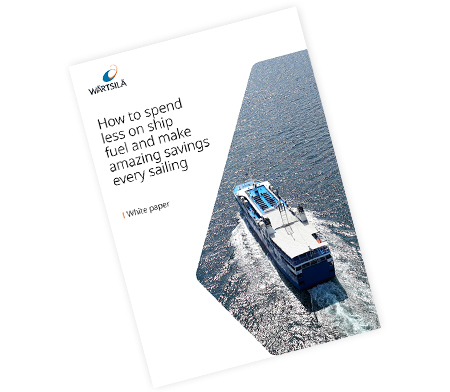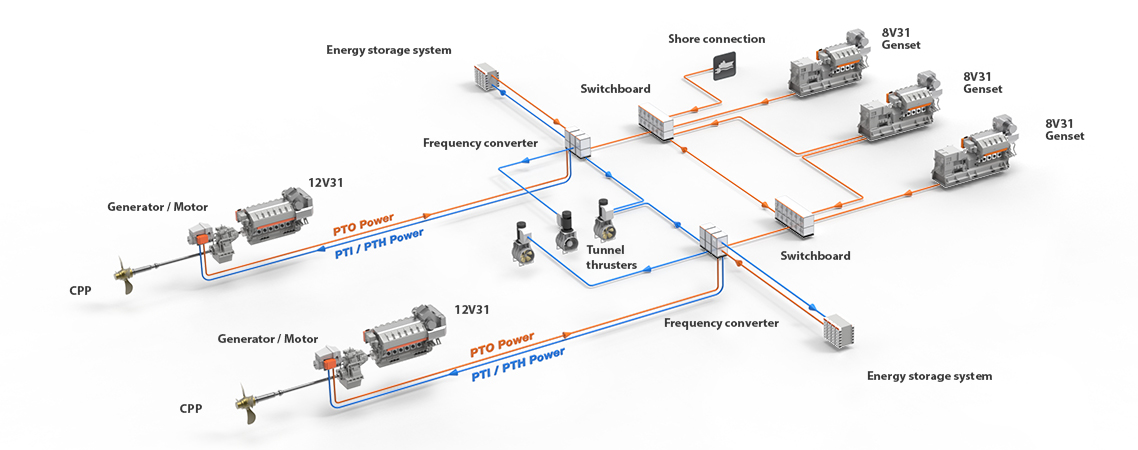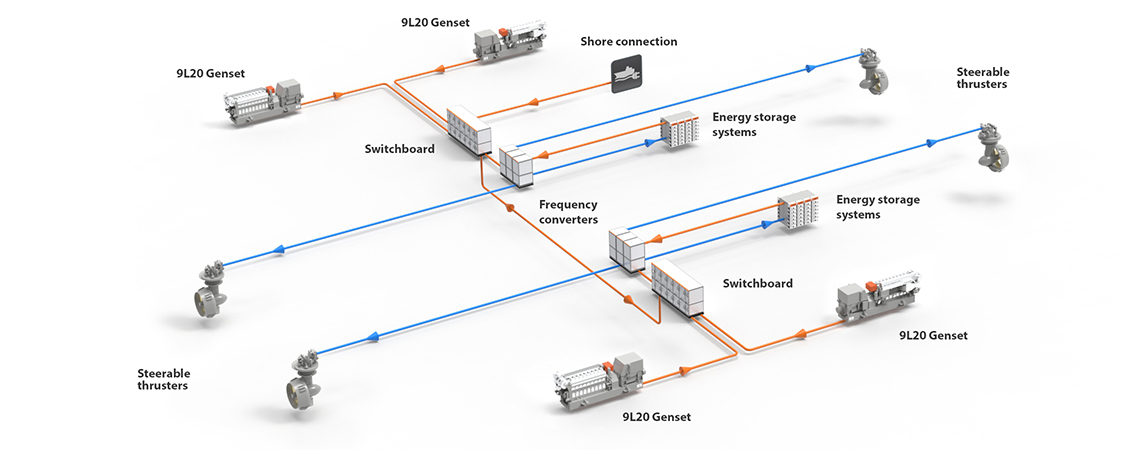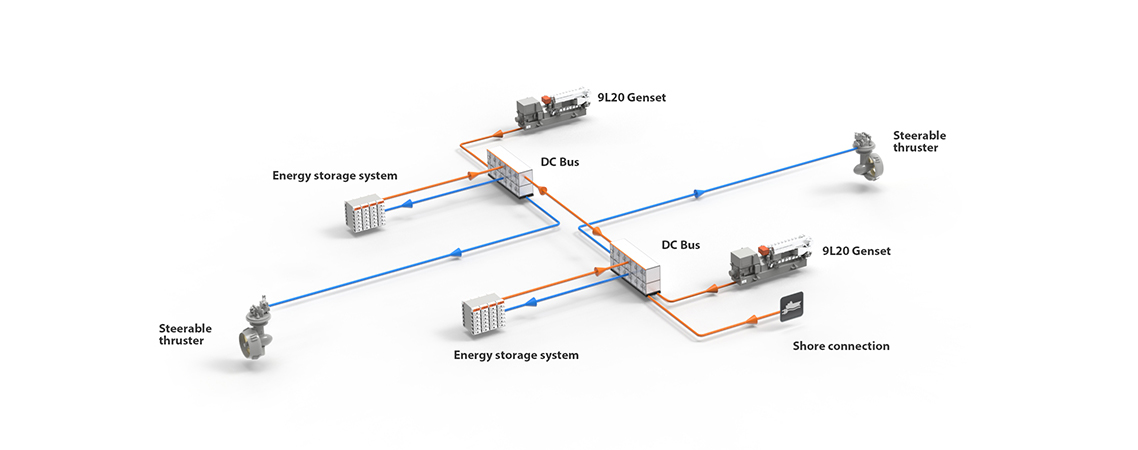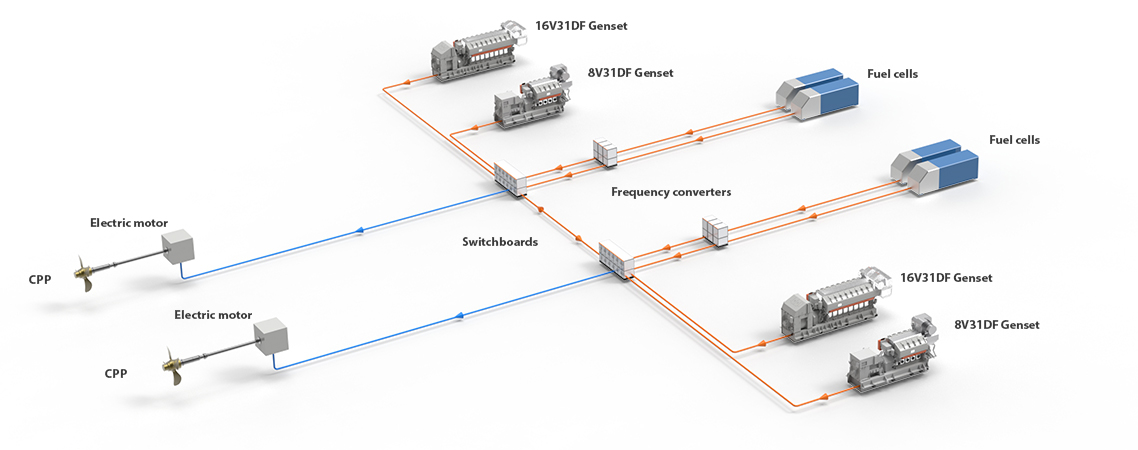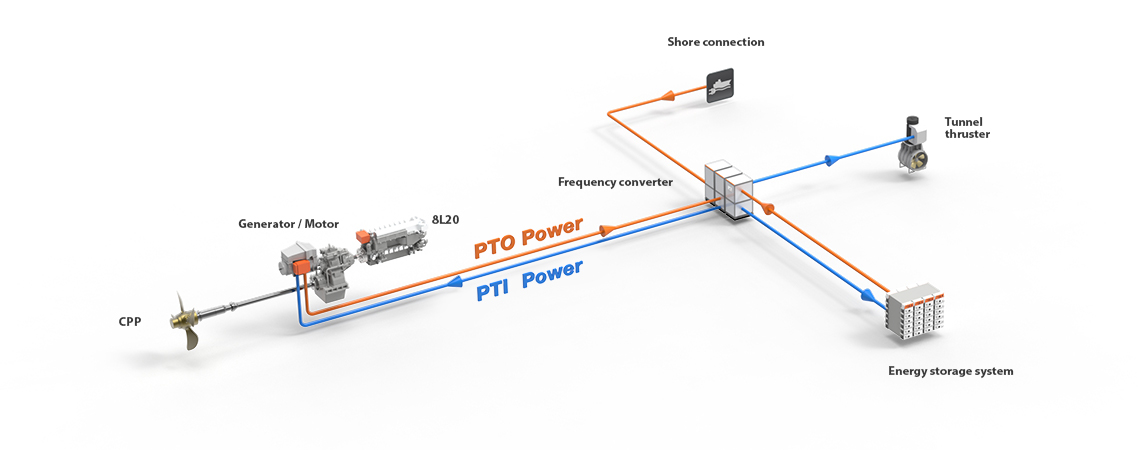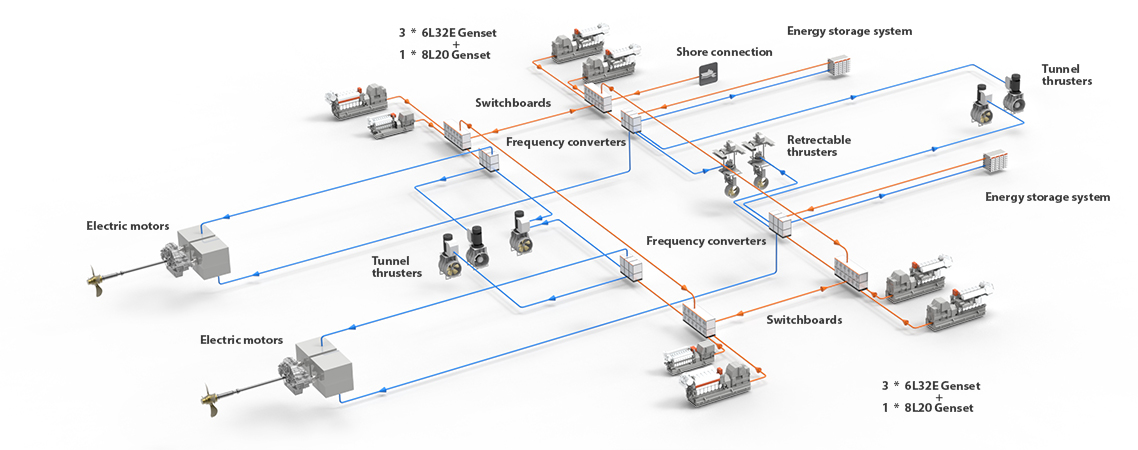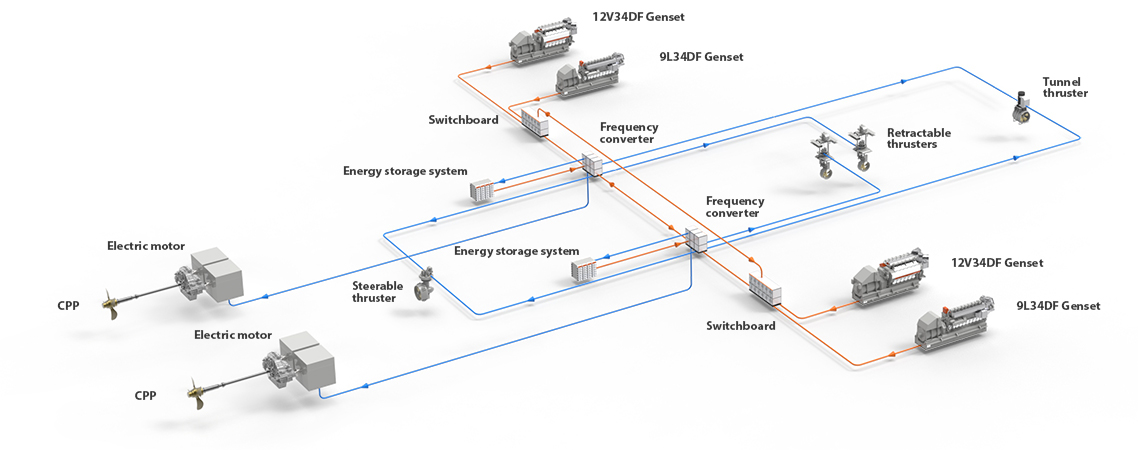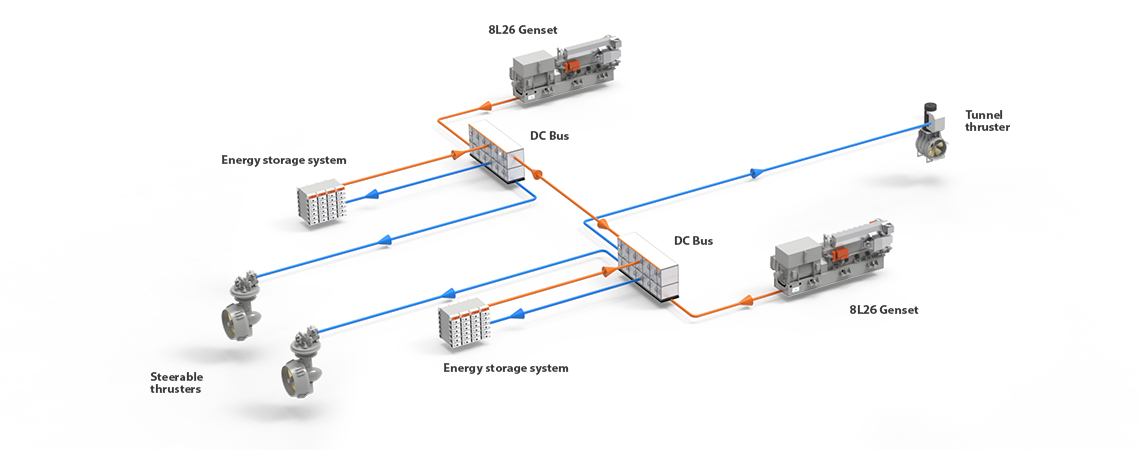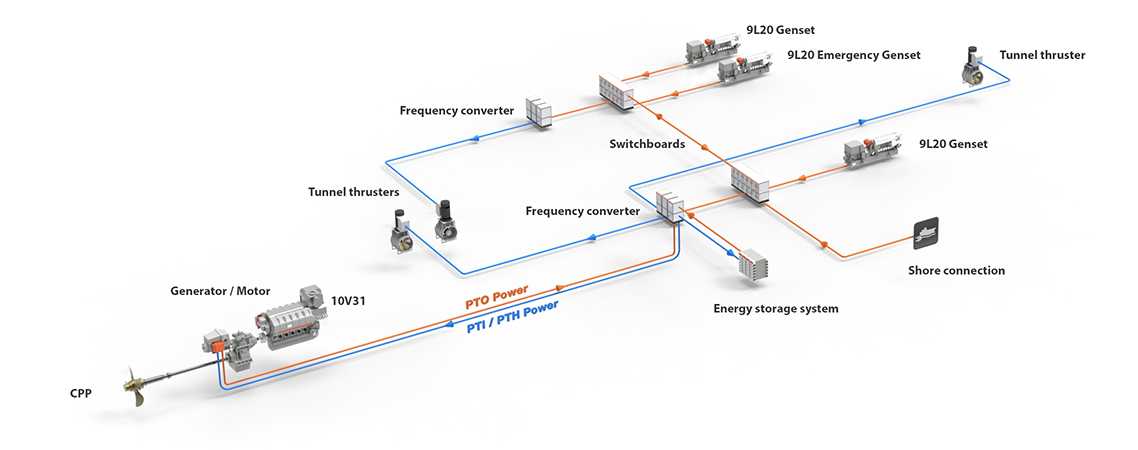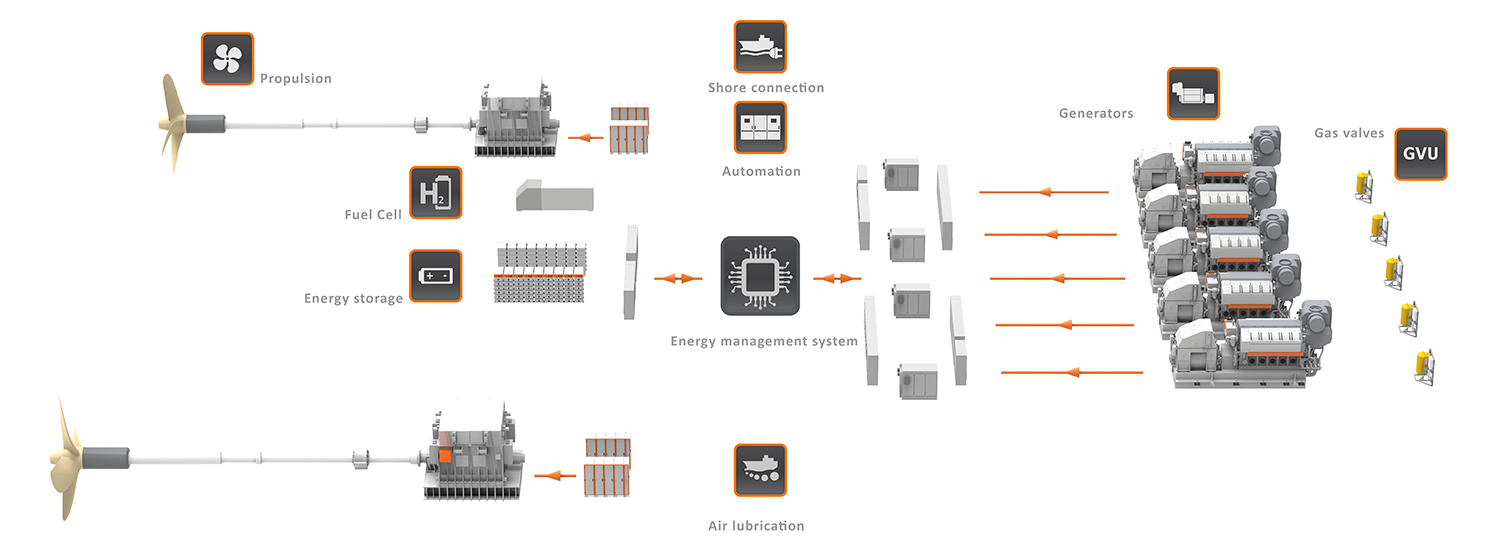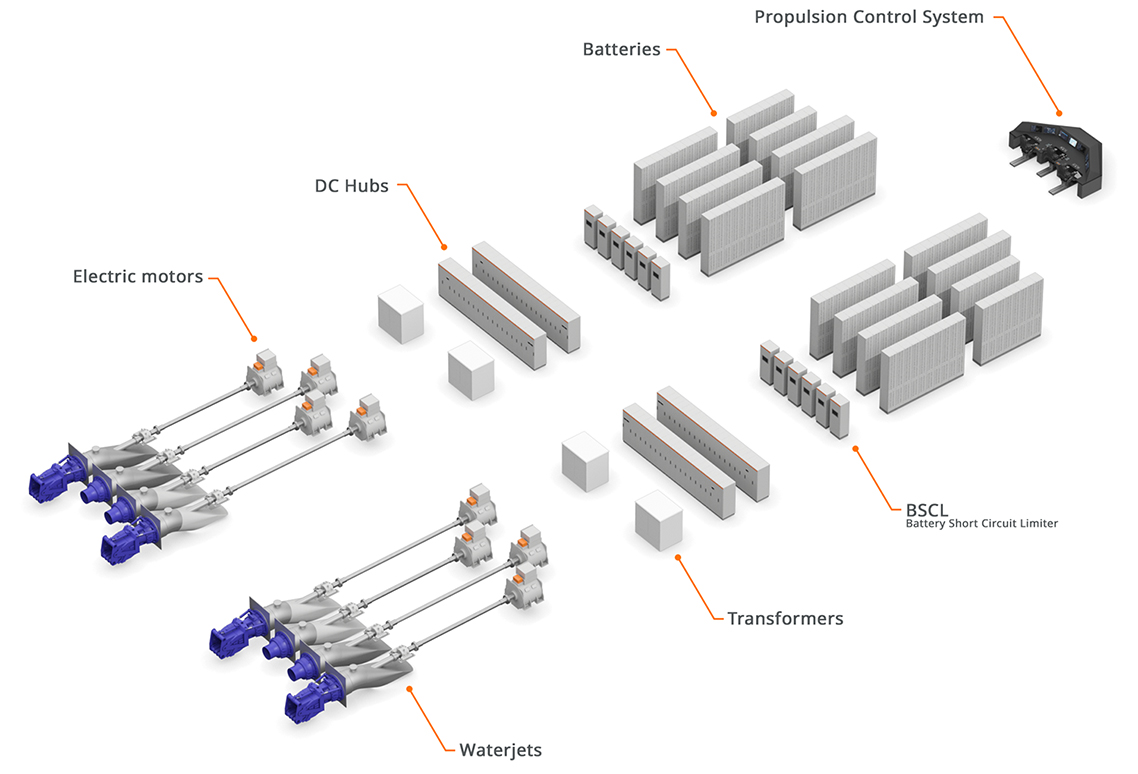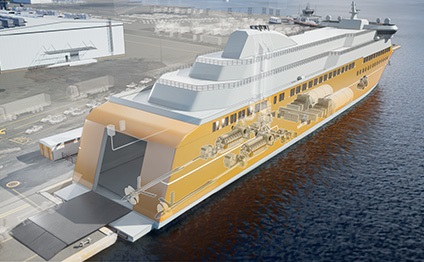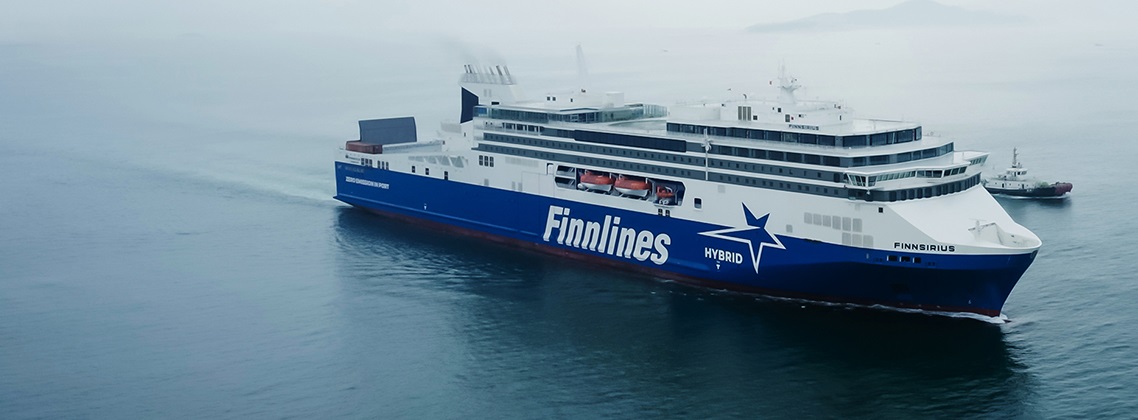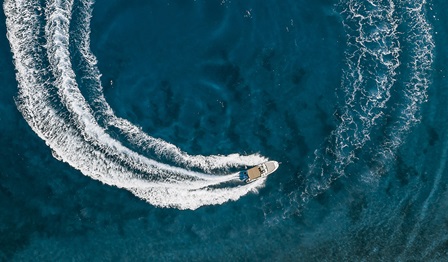
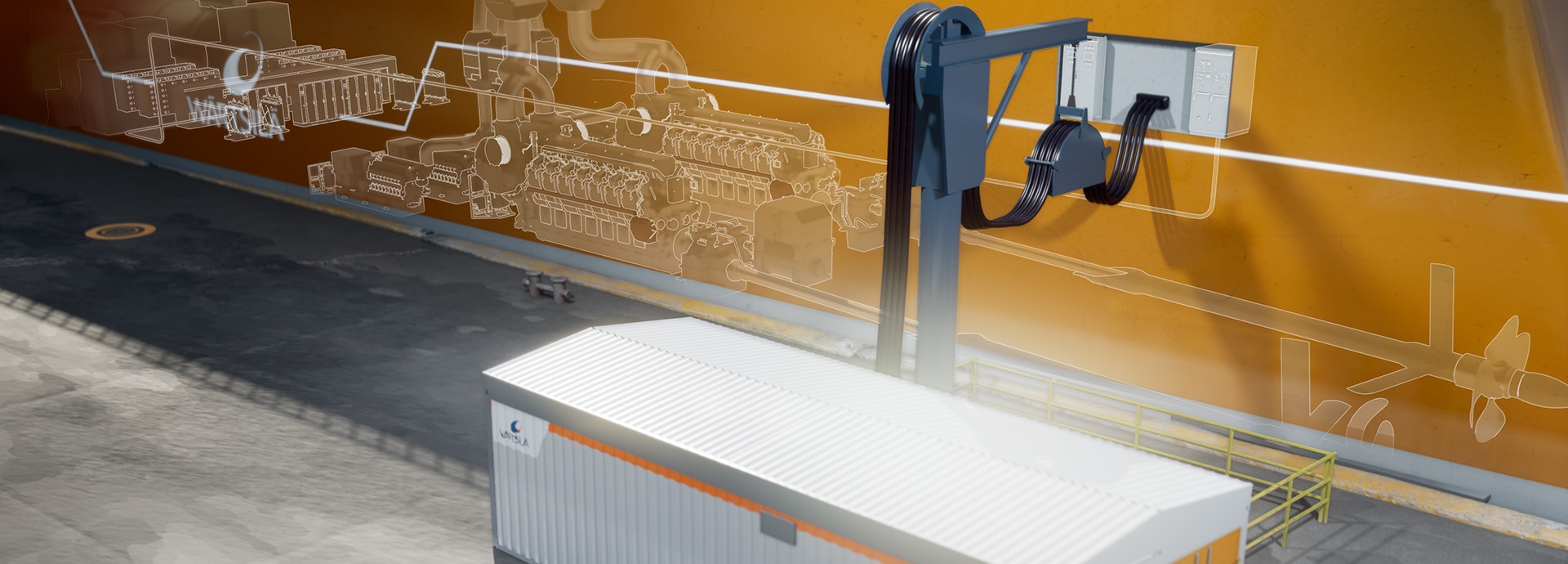
There’s more to electric shipping than electric propulsion
Electric shipping and hybrid ships are important solutions now that the marine industry has entered a new era – the age of decarbonisation and strict regulation. Vessels must be future proof: flexible enough to adapt to the changing needs in the future. As the regulation evolves and restrictions on emissions become stricter, the best way to stay competitive is to rely on the best available technologies. Electric shipping or ship electrification is one of the key solutions for marine decarbonisation.
The future of shipping is here: Play the video to discover how these interesting electrical solutions can reduce the environmental footprint for different vessels.
Electrical solutions and decarbonisation
Electrical solutions will deliver reduced emissions as retrofits and offer a competitive advantage also for newbuild vessels.
Electrical solutions have been part of vessel design for many years in the form of diesel-electric propulsion or shaft generators, for example. The share of green energy – from renewable sources such as wind, water, and solar – in land-based electrical grids is on the increase.
It makes sense for ships to take advantage of shore-based green energy. As an example, using a shore connection can reduce emissions significantly while the ship is in port. Depending on the vessel and its operating profile there are many ways to reduce its emission footprint. The key is optimisation: finding the right solution for each vessel.
Slow steaming used to be the favourite solution for many vessels to reduce emissions. Flexibility was not an issue then, so this means that some vessels will never be fully optimised. Electrical systems onboard make it possible to use smarter propulsion systems. Smarter, more resilient, and more flexible – and thus capable of adapting to the changing needs in the future of shipping.
What powers cruise ships in the future? Will cargo ship engines be electric?
Deepsea vessels will have to adopt green fuel engine technology to decarbonise. Electrical systems will be an integral part of the system including shaft generators and shore connection. Electric cruise ships and electric cargo ships are a futuristic concept, but they can go hybrid and take advantage of solar energy to improve their efficiency.
Tugs can benefit from hybrid or even full electric solutions. They operate close to the shore to land based electrical infrastructure. Because they have high load variations and spend long periods of time on standby, hybrid electric solutions will cut their GHG emissions significantly.
Ferries are often part of local transportation routes and can easily use the land-based charging infrastructure. If the route is short enough, the ferry can even be fully electric. Many ferries still prefer to have a hybrid electric solution to minimise risks.
Any short-distance or coastal vessel can be a hybrid ship. They can charge their ship battery with green energy available at the port. They can be a zero emission ship while manoeuvring, station keeping, and port navigating if they switch to full electric power during those operations.
Could you benefit from a hybrid solution?
Hybrid systems can be used on a wide variety of vessel types, both newbuilds and retrofits. Discover the clever ways that a hybrid solution could help you cut your vessel’s operational costs.
Battery-powered ships, hybrid ships or diesel-electric ships?
Which solution would be optimal for your vessels? The following are examples of actual solutions.
E&PMS landing page Solutions
Expand all
Why electrification – market trends and drivers
Watch the video and you will also learn three reasons to consider ship electrification as a solution for marine decarbonisation.
Solutions in more detail
Customer stories
Discover the benefits others have already gained from marine electric solutions.
Insights on electric shipping
Discover these insightful articles and case studies – they will build your knowledge of ship electrification and hybrid marine solutions.
Webinars related to electric shipping
Explore what you need to know about electric shipping and hybrid ships: watch the webinar recordings to learn from experts from the maritime industry and associations.
Hand-picked press releases
Wärtsilä partners with Transworld Ship Management on Decarbonisation Modelling
Technology group Wärtsilä will partner with Transworld Group to apply the most advanced decarbonisation modelling capabilities to the bulk carriers sector of Orient Express lines of Dubai, owned by Transworld Group and Managed by Transworld Ship Management (TWSM), one of India's premium private sector ship management firms. The aim of the project is to provide decision-making support by simulating the impact of efficiency upgrade technologies on the vessel’s environmental performance. The order with Wärtsilä was booked in December 2022.
By creating and validating a digital model of the ‘TBC Prestige’ based on measured real-life data, various technology solutions can be simulated and assessed. The technology simulations will indicate their effect on emissions profiling, the impact on the ship’s Carbon Intensity Indicator (CII) rating, and Return on Investment (ROI) calculations. This is the first such modelling project for the Indian maritime market. The modelling is part of the Wärtsilä’s Decarbonisation Services offering.
“We are determined to explore all options for decarbonising our fleet operations. Wärtsilä’s modelling capabilities will allow us to determine the best way forward for achieving our sustainability ambitions in the most cost-effective and efficient way possible. The ‘TBC Prestige’ was chosen for this project as we have ten similar bulk carrier vessels in our fleet,” says Sanjiv Kumar, Chief Executive Officer, Transworld Group.
“Wärtsilä is the only equipment supplier able to provide this kind of service with full in-house capabilities. It is a value-adding service from a company with vast experience and know-how in meeting the marine sector’s complex environmental regulatory requirements. We applaud Transworld Ship Management for their vision in seeking an optimal decarbonisation solution,” says Sachin Kulkarni, General Manager, Marine Business Sales for South Asia, at Wärtsilä.
Among the technologies to be examined in this project are a new optimised propeller, Wärtsilä’s Energoprofin, an energy-saving propeller cap, a shore power solution, and a shaft generator system. TWSM and Wärtsilä have established a long-term relationship with various lifecycle services and solutions having been previously delivered.
Media contact for more information on this release:
Isabella Alder
Positioning and Strategic Communications Manager
Wärtsilä Marine Power
Tel: +44 (0)7792 681 757
marine.media@wartsila.com
Image caption: The project will create and validate a digital model of the ‘TBC Prestige’, based on measured real-life data © Transworld Group
All Wärtsilä releases are available at https://www.wartsila.com/media/news-releases and at http://news.cision.com/wartsila-corporation where also the images can be downloaded.
Wärtsilä in brief:
Wärtsilä is a global leader in innovative technologies and lifecycle solutions for the marine and energy markets. We emphasise innovation in sustainable technology and services to help our customers continuously improve their environmental and economic performance. Our dedicated and passionate team of 17,500 professionals in more than 240 locations in 79 countries shape the decarbonisation transformation of our industries across the globe. In 2022, Wärtsilä’s net sales totalled EUR 5.8 billion. Wärtsilä is listed on Nasdaq Helsinki.
www.wartsila.com
Take your easiest step on your journey to ship electrification - get in touch and let’s discuss your needs and options!
